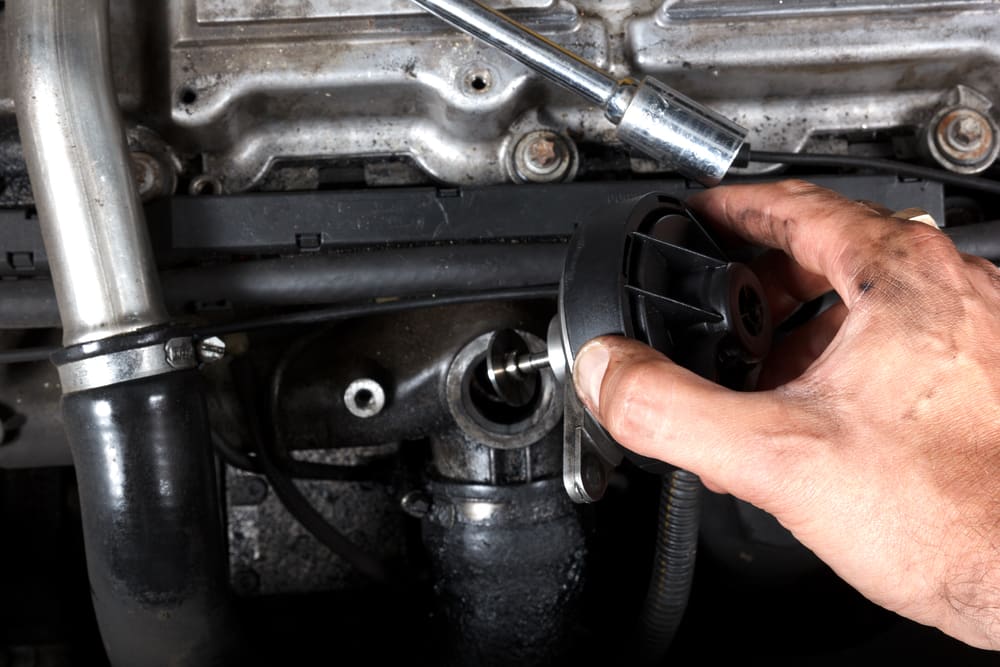

What Does the EGR Valve Do?
The exhaust gas recirculation (EGR) valve is a component commonly found on many road-going vehicles. It is a part of the vehicle’s exhaust gas recirculation (EGR) system, an emissions system designed to recirculate exhaust gasses back into the vehicle’s intake in order to reduce cylinder temperatures and NOx emissions. The EGR valve is one of the main components controlling the flow and recirculation of these exhaust gasses. When the valve is opened, exhaust gasses are allowed through the vehicle’s EGR system to help control vehicle emissions. When the EGR valve has an issue, it can cause problems with the flow and operation of the EGR system, which can lead to increased emissions and performance issues. Usually, a bad or failing EGR valve will produce any of these 4 symptoms that can alert the driver of a potential issue.
1. Issues Impacting Engine Performance
The first common sign of a bad EGR valve is engine performance issues. A clogged or malfunctioning EGR valve can disrupt the vehicle’s air-fuel ratio, which can cause engine performance issues such as a reduction in power and fuel efficiency. The vehicle may also stall or hesitate while accelerating.
2. Rough Idling or Jerking
Another common bad EGR valve symptom is rough idling or jerking. It’s not uncommon for EGR valves to malfunction and become stuck in the open position. This can lead to exhaust gas recirculation, which causes rough idling even when the conditions are not desirable. It may also contribute to a smell of fuel as well
3. Rattling Noise When Accelerating
Commonly known as a spark knock, a pinging or knocking sound may occur when accelerating if the EGR valve is going bad. This means the fuel is detonating within the engine instead of burning steadily. A faulty EGR valve causing this issue doesn’t allow the right amount of exhaust to dilute the air-fuel mixture and lower combustion chamber temperatures. If this continues to happen, it can lead to other engine component failures. The EGR valve will need to be replaced or cleaned of built-up carbon deposits.
4. Check Engine Light Illuminated
An illuminated Check Engine Light is another symptom of a bad or failing EGR valve. If the computer detects an issue with the vehicle’s EGR valve circuit or position, it will set off the Check Engine Light in order to notify the driver of the issue. The Check Engine Light can be activated by a wide variety of other issues, so having the computer scanned for trouble codes is highly recommended.
Is it Safe to Drive with a Faulty EGR Valve?
While a malfunctioning EGR valve may not pose an immediate safety risk, it can lead to reduced engine performance and increased emissions. If you suspect that your EGR valve is failing, it's advisable to have it inspected at your first opportunity and have it repaired by a qualified mechanic.
To prevent further issues with the EGR valve, it's important to conduct regular maintenance checks on your vehicle. This includes inspecting the EGR valve and associated components for signs of buildup or damage. Regular cleaning and servicing can help prevent carbon deposits and other debris from clogging the valve and causing malfunctions.
The EGR valve is an important emissions component, especially for vehicles in states with strict emissions regulations. You won’t be able to pass a smog test with a faulty EGR valve. If the EGR valve needs to be replaced, it’s important to purchase a quality EGR valve for replacement to prevent future vehicle problems. If you suspect your vehicle’s EGR valve of having an issue, have the vehicle inspected by a mobile mechanic from YourMechanic to determine if the vehicle needs an EGR valve replacement.



